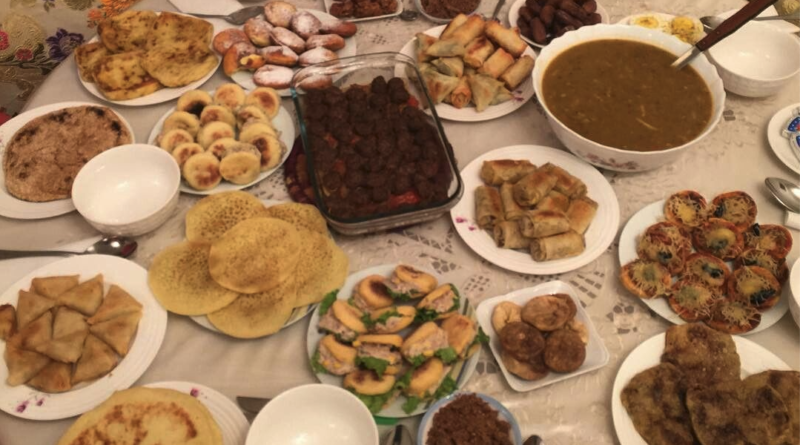The Richness of Moroccan cuisine in Ramadan
Morocco has a unique yet diverse cuisine shaped by its strategic location in the northwest corner of Africa as the gateway to the Mediterranean. This made weaving of outside influences with the native Amazigh cuisine has created a rich cuisine with a mesmerizing mosaic of sweet, savory, and exotic flavors.
In Morocco and across the Maghreb, Ramadan is not only an annual religious duty, but also a time for inner reflection, and self-control. The long fasting day provides a surprisingly wonderful opportunity to indulge testing and refining some of the delights of Moroccan cooking.
Moroccan women during Ramadan spend the late afternoons of the day shopping and preparing dishes for the first meal (ftour), dinner, and last meal before dawn (suhur).
Ftour with Harira and sweets
At sunset each day during Ramadan in Morocco, families gather around the dinner table and often break the fast with a date or drinking a cup of water. This ritual is followed by bowl of harira, a tomato-based soup that is emblematic of Ramadan.
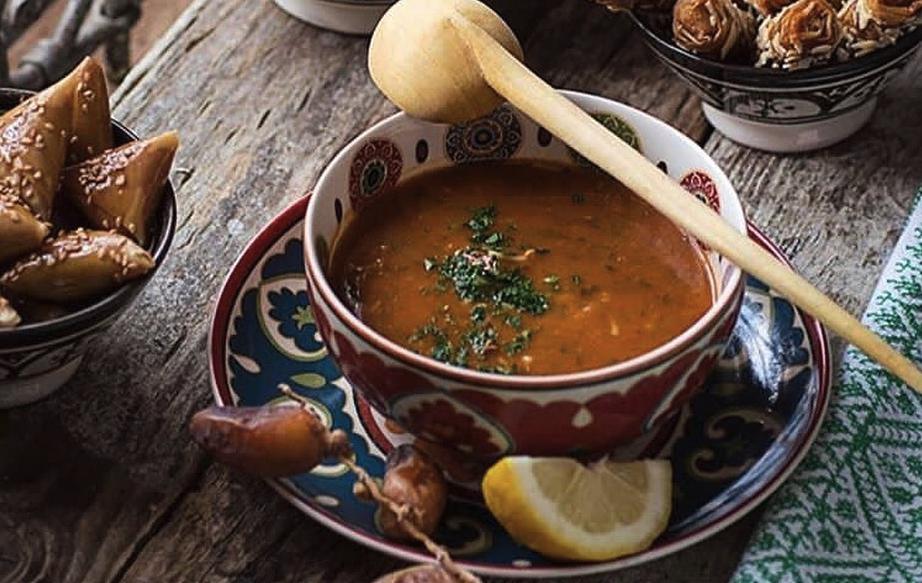
A typical ftour always features harira along with a variety of sweets like dates, dried figs, and chebakia. Chebakia are flower-shaped cookies soaked in honey or syrup and sprinkled with sesame seeds. It is not unique to Morocco and shared across the Maghreb countries.
Sweets are an integral part of the social aspect of Ramadan, and each families make sure to have plenty around to consume, or offer to friends and extended family.
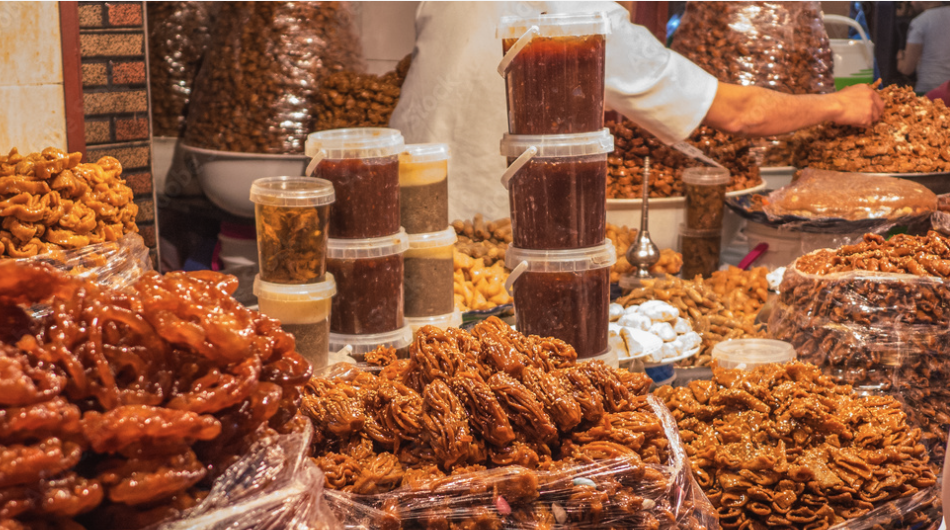
The carbs-heavy breads and pastries
After the soup comes a variety of breads such as sefnej, msemen, beghrir, batbout; and perhaps some harcha, the semolina bread. Arrayed with them on the table are marmalades, butter, and the fresh cheese jben. There are bowls of olives and others of hard-boiled eggs, which are peeled and then dipped in ground cumin or black pepper.
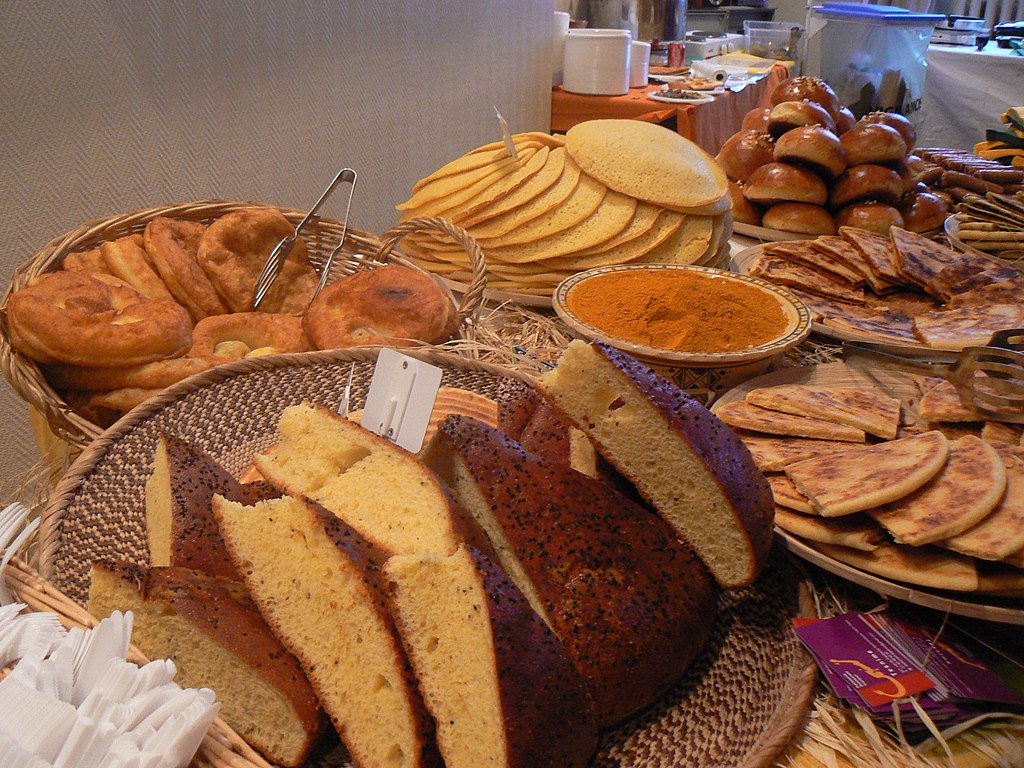
Another Ftour favorite are the Briouats, pan-fried golden pastries filled with a homemade almond paste and flavored with cinnamon and orange flower water. Some are savory, stuffed with fresh cheese and finished with an intriguing drizzle of honey, while others are sweet, filled with crushed almonds, sugar, and spices.
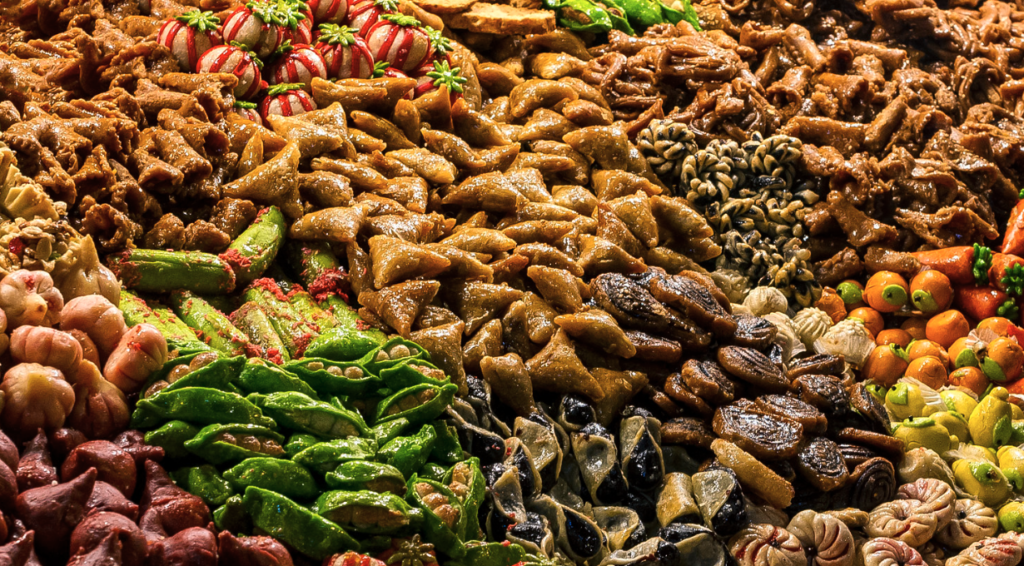
Tea and drinks
Along the carbs-heavy ftour goes rounds of drinking. Water is served, of course, along with coffee, juice, milk, and smoothie-like concoctions puréed with avocado. Mint tea marks the end of the meal. Depending on the season, mint can be paired with other fresh herbs, such as marjoram, sage, wormwood, and lemon verbena in the tea.
Sweets reappear ceremoniously at the end of the ftour meal, and in a big way. Platters are piled with cookies, among them Moroccan Tea Biscuits known as fekkas; they look remarkably like crisp Italian biscotti. Also served is Sellou which is made of ground almonds and sesame flavored with anise and cinnamon.
Treats such as m’hanncha, dubbed “snake cake” for its concentric circles, are another representative dessert. Dates reappear on the table, this time stuffed, often with a homemade almond paste.
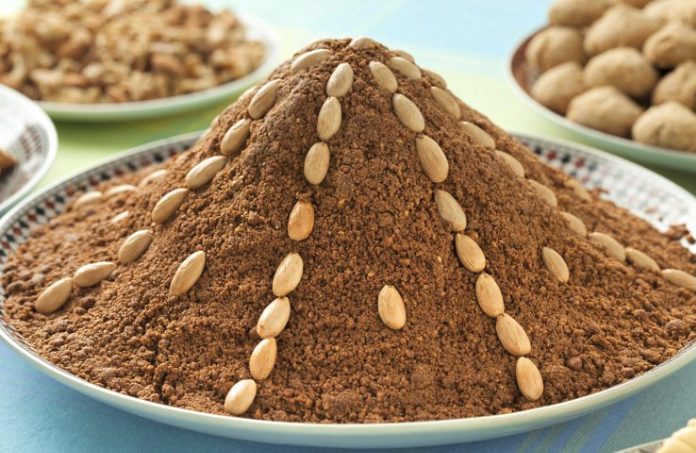
Dinner with tagines or couscous
Surprisingly the eating does not end up here. The ftour, although elaborate is still considered a light meal! Because later in the evening, a late dinner, is served which is more protein based. This might feature a lamb or chicken tagine, kafta tagine or fish tagine, or Couscous. and a selection of salads. Moroccans living along the Atlantic coast or the Mediterranean sea will also serve fried fish, usually sardines.
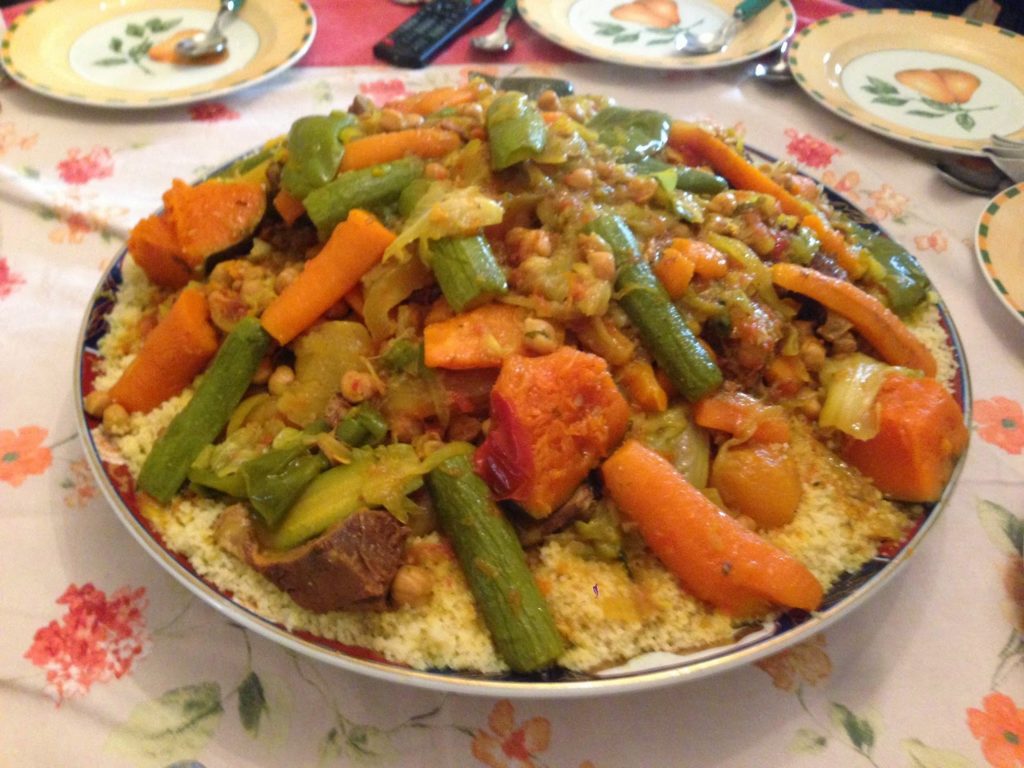
A light Suhur
Ramadan nights are short, in order to fit in the Moroccan morning suhur before sunrise. This meal may consist of yogurt or milk, croissants, and, of course, plenty of water in preparation for a long day without.
